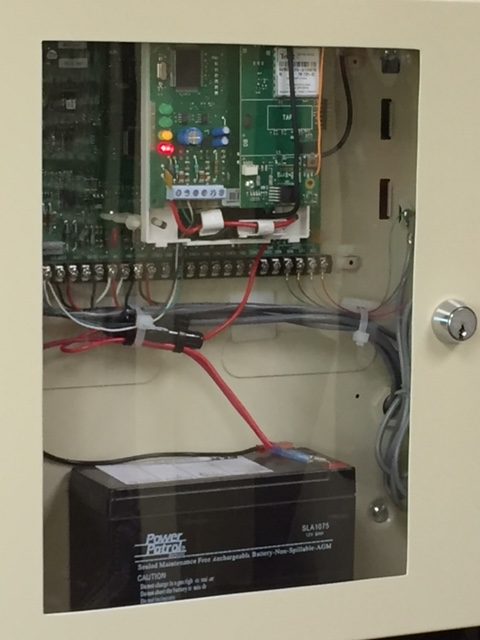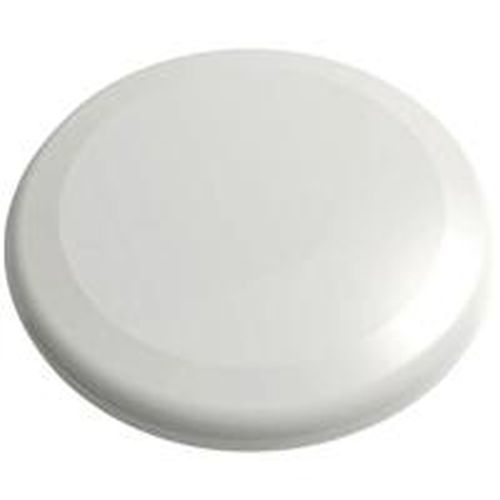Out of all the technology-related products people encounter regularly, security systems prove the “scariest” for many consumers. After all, monitored alarms have the ability to call out to our central station and initiate a police dispatch. This feature can make anyone feel a little nervous. Furthermore, many find the nature of the systems themselves quite confusing. Security systems often have a very sparse and hard-to-translate “language” on their keypad displays. In fact, older systems often have no words on their displays at all! Instead, these alarms display nothing but a series of lights while making “beeping” noises to communicate. Therefore, we completely understand when people feel afraid of this technology. In this post, we will share the basics behind how alarm systems work to help ease some of this fear.
We will begin by discussing the components behind an alarm installation. Each security system has a panel and keypad that gives power to the system and allows users to control it. From there, we also install the security contacts that detect criminal activity. We will discuss these components, as well as some additional security options. Furthermore, many alarm systems work with a monitoring service. Security monitoring allows for the emergency police dispatch that we mentioned earlier. We will look into the various options we offer to help provide this service. Now, let’s look at some of the various components that make up a security system!

Alarm panels, such as this model by Interlogix, provide the power and the “brains” of a security system.
Security System Components
Every security system contains items from a few different “categories” of products. In this section, we break down these categories, including descriptions of the items within each category. We will begin with the “major” system components that give an alarm power and a control interface for alarm users. From there, we will describe the items that detect intrusion. Finally, we will look at non-burglary alarm item options, including life safety security and environmental sensors. Getting to know the different types of items an alarm contains will give you a good understanding of how alarm systems work. Now, let’s look at the “brains” that we must install to make a security system work!
The Brains of the Operation
When designing a security system, the most important decision lies in choosing the type of alarm panel to install. This panel provides the security and user experience a given customer desires. We have a couple options for alarm panels that each provide their own unique features. Traditional alarm panels, such as the one pictured, plug into a wall and provide a board for us to plus in hardwired alarm components.
These panels require us to run wire from the panels to any keypads or sirens we install. Additionally, we can run wires from the panel out to security contact locations as well. A few decades ago, security panels required hard wiring from the panel to each and every security contact. Over the last 20 or so years, the ability to install hardwired or wireless contacts with these panels became the standard. The more modern versions of this type of panel include an antenna to allow communication between the panel and wireless sensors.
More recently, “all-in-one” alarm panels have risen in popularity. These panels include a siren right on the keypad unit, and do not require any hardwired components at all. Additionally, these panels often provide the most convenient, user-friendly experience available. Our preferred alarm panel, the QOLSYS IQ Panel 2, fits this description. In light commercial settings or residential settings, many customers find all-in-one alarm panels ideal. However, customers in commercial settings often like having their alarm panel installed in a separate location from their keypads to limit access to the most important piece of their security system. Now, let’s look at the parts of the alarm that “talk” back to the panel when something goes wrong!
Door and Window Contacts, Motion Detectors, and “Specialty” Security Sensors
When people want a security system with “the basics,” we start by putting contacts on every exterior door. From there, we can use window contacts or motion detectors as additional security. These sensors report back to the panel either through wire or through a radio frequency. If a contact is tripped while the system is armed, this activates the alarm’s siren and sends a signal to the central station. From a cost standpoint, securing every door and using motion detectors to watch for activity over a property’s main areas is most efficient. However, some customers prefer the security of arming each window individually. Furthermore, customers with large pets avoid motion detectors to prevent false alarms.
Additionally, we offer sensors above and beyond the security system “basics” described above. We also offer sensors that provide security based on unique situations. For example, we can install glass break detectors to secure areas with sliders or picture windows. Furthermore, sensors with extra radio frequency range allow customers to secure outdoor sheds and exterior garage doors. Shock sensors can help detect someone attempting to break in through a window before they can breach the property. For more information on alarm equipment that goes above and beyond the “usual,” check out our post on Specialty Security Sensors for Your Home. Now, let’s look at one more category of alarm equipment!
Life Safety and Environmental Security
Of course, monitoring a property for burglary creates extra security and peace of mind. However, we recommend going above and beyond this goal while designing an alarm. We also install equipment to detect against life-threatening fire and carbon monoxide (or “CO”) events. For businesses, we install complete fire detection systems. This process involves installing systems with the proper smoke, CO and heat detection, as well as ensuring that we follow the codes and laws that govern commercial fire alarm design and installation. For residential customers, we can install smoke, CO, and heat detectors on the same panel that we use to communicate with their burglary-related security devices.

Environmental sensors, such as this combination freeze and flood sensor by Interlogix, can alert you to both frozen pipes or water in your basement.
As an additional way to secure your property, we also install environmental sensors. For example, our water sensor can help detect a flood right at the start This, in turn, helps you stop it from turning into a ruinous and expensive disaster. Our low temperature sensors can also help you detect extreme temperatures caused by frozen pipes. These options allow homeowners to gain an incredible amount of security and peace of mind. Now that we’ve looked at the items that activate alarms, let’s look at what happens after this alarm activation takes place!
Monitoring Options
Obviously, a big part of understanding how alarm systems work lies in knowing how they call for help when needed. Many people assume that alarm systems “call” the police on their own. In fact, some older alarms did dial the local police station directly and play a pre-recorded message. However, these types of systems do not conform to more recent laws designed to cut down on false alarms. Instead, monitored alarms dial a central station. At that point, a central station dispatcher calls the property to see what has happened. If nobody answers, or if the person who answers cannot provide the “passcode” chosen upon the alarm’s installation, the dispatcher calls the proper authorities.
In this section, we look at the options for providing this monitoring service. We will begin by describing unmonitored alarm system functionality. Some alarms do not dial out upon activation at all! From there, we will discuss “traditional,” phone-line based alarm monitoring. As a wrap-up, we will then discuss the “latest and greatest” in security alarm monitoring options. Let’s get started by looking at what happens when customers do not monitor their security systems.
“Local” Alarms
As security professionals, we certainly recommend alarm monitoring to all of our customers. However, some of them prefer their alarms to create a siren response without sending out for help from a central station. We call these systems “local” systems, as they do not alert anyone offsite to a disturbance. Many customers ask why someone might prefer a local system to a monitored alarm. As it turns out, there are a few reasons.
Sometimes, customers wish to “practice” using their alarms before adding this service. This allows them to create a few false alarms without worrying about a visit from the police. Furthermore, security monitoring does come at a cost. While we offer lower monthly monitoring rates than many companies, alarm monitoring carries a monthly bill along with it. Customers wishing to avoid this fee may opt for a local alarm. At this point, we’ve seen how alarm systems work when they are unmonitored. Next, let’s see how we connect security systems to our monitoring services for additional security.
Traditional Security Monitoring
A couple decades ago, we required onsite phone lines to monitor a security system. Connecting a customer’s phone to our security system provided the necessary mans for the alarm to dial out to our central station. This type of monitoring does have its benefits. While not as secure as the monitoring option we’ll discuss later, it does provide the most budget-friendly monitoring. After all, we do not have to install any additional equipment to monitor an alarm through existing phone lines.
Unfortunately, phone service has gotten far less reliable over the past several years. Many phone companies refuse to service their traditional phone lines. Instead, these companies offer internet-based phone service when customers experience issues. Furthermore, the popularity of cell phones has given companies very little reason to worry about their older, deteriorating network of phone lines. When an alarm customer’s phone lines go down, it stops the alarm from dialing out when needed. Therefore, we prefer to monitor our customers’ alarms without the use of their phone lines. Now, let’s look at our preferred style of monitoring that addresses these issues!

Interactive cellular monitoring services allow customers to control their alarm systems remotely using a smartphone or any internet-connected device.
Cellular Monitoring
Cellular monitoring offers the security of alarm monitoring without relying on physical phone lines. Instead of connecting an alarm to a phone line, we can install a cellular dialer inside the alarm itself. In turn, this dialer uses a cellular network to connect the security system to our central station. As we mentioned, this service does increase the cost of alarm monitoring. However, it can still save customers money overall. Customers who pay a pricey phone bill just to monitor their alarms can add cellular monitoring and cancel their phone service. These customers also get more bang for their buck. As we pointed out, phone issues can render an alarm’s monitoring capabilities useless. Installing a cellular dialer fixes this issue, allowing alarms to communicate reliably.
Furthermore, our cellular dialers powered by Alarm.com also add security in other ways. Our cellular dialer allows us to provide interactive cellular monitoring. This feature involves using a cell phone to control the alarm remotely. The ability to arm and disarm a security system with a phone can add tremendous security and peace of mind. Interactive cellular monitoring also allows alarm users to receive alarm-based text alerts. These can include notifications to alert customers to conditions such as a low alarm battery, a system arming or disarming, or even a specific door being opened, regardless of whether the system is armed or not at the time. This amount of control and security makes interactive cellular monitoring our most popular alarm monitoring service!
Understanding How Alarm Systems Work to Improve Security
We hope that you have a better understanding of how alarm systems work after reading this post. If you have any alarm-related questions, please do not hesitate to contact us. We will happily answer any questions you have about security system design. Furthermore, we provide free site surveys for both new and existing alarm customers. Perhaps you have an alarm and want to add some of the security detailed here. Or, maybe you want to install a new alarm while working with us to design a system that fits your needs. Either way, we will work with you to create a security plan that keeps your valuables, your property, and the people in it as safe and secure as possible!
